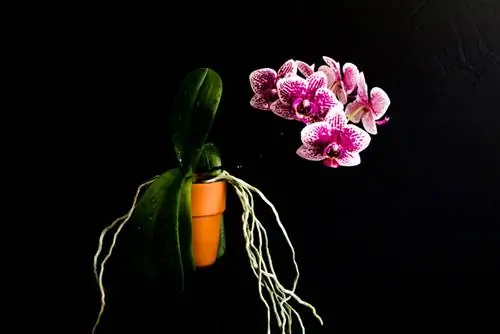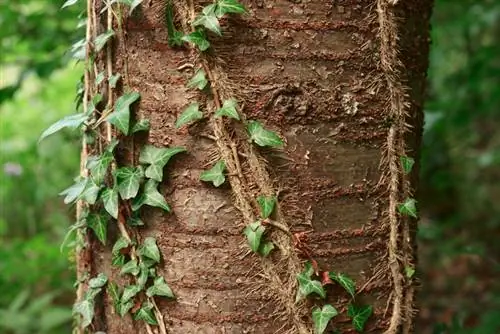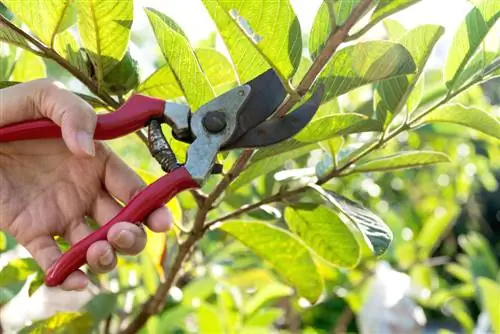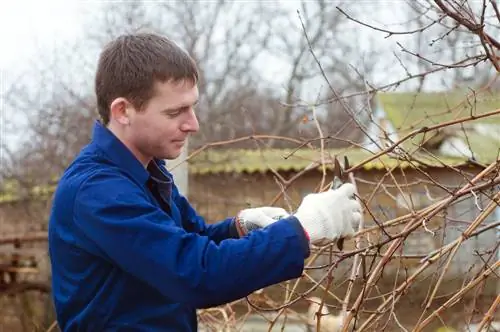- Author admin [email protected].
- Public 2023-12-16 16:46.
- Last modified 2025-06-01 06:02.
Aerial roots were orchids' ingenious answer when the dense canopy of leaves in the rainforest prevented them from accessing light millions of years ago. The exotic flowers hold onto the branches with their aerial roots and catch the nutrient-rich rain. It is obvious that these lifelines should not be cut if possible. We would be happy to tell you when and how you can still cut off orchid roots.
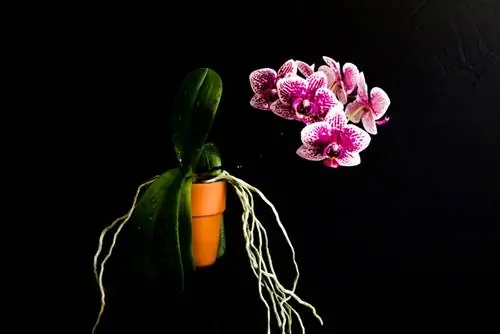
When and how should you cut orchid roots?
Orchid roots should only be cut if they are diseased, rotten or dead. Spray silvery-white roots with lime-free water to check their condition. Cut off diseased roots immediately and disinfect the cutting tool between each cut.
Distinguish diseased roots from he althy ones - this is how it works
In view of their vital functions, it is obvious that he althy orchid roots should not be separated. An exception applies if the root strands are diseased, rotten or dead. Diagnosing this condition with certainty is not always easy. On their surface, aerial roots have an absorption tissue made up of air-filled tissue cells that appear white or cream-colored when dry and are still fully functional.
As long as an orchid root grows succulent and green, there are no doubts about its he alth. If you notice silvery-white, dry roots, a moisture test will provide information about the actual condition. Spray these aerial roots with lime-free water. If they do not turn green within a few minutes, you can cut off the roots. You can immediately cut off any orchid roots that are mushy, rotten-brown or have black spots.
Instructions for root pruning on epiphytic orchids
If you have found diseased or rotten roots on an orchid, you need to take immediate action to prevent the pathogens from spreading further. If the strands are dried out due to a lack of water, wait until the next repotting date before cutting them back. Have a freshly sharpened knife, scalpel or scissors ready, as well as disinfectant. How to do it right:
- Unpot the orchid and shake off the substrate
- Fix the affected aerial root with one hand, take the cutting tool in the other hand
- On roots with black spots, cut off the diseased tissue in stages from the tip
- Meticulously disinfect the blade between each individual cut so as not to transfer bacteria to he althy tissue
The pruning is finished when only juicy green tissue remains on all aerial roots. Ideally, you should now take a new culture pot to plant the orchid in fresh substrate. If you would like to use the previous container, it will be thoroughly cleaned and disinfected.
Tip
If numerous aerial roots protrude beyond the edge of the pot, the cramped orchid would like a larger culture pot. Please choose a date after the flowering period to repot the orchid. Immersed in soft, lukewarm water for a few minutes, even the most stubborn root strands become beautifully pliable.

